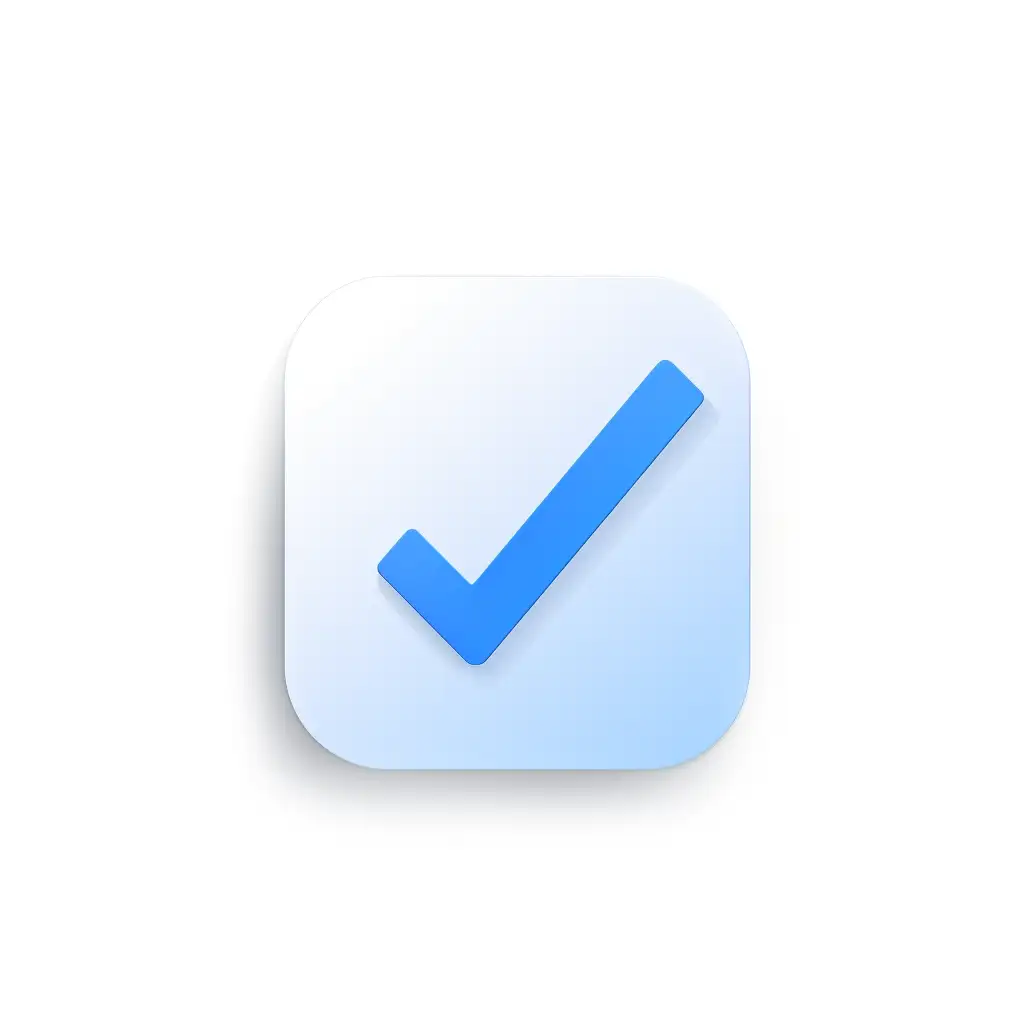What is Payroll Software? - Your Ultimate Guide

What is Payroll Software?
Payroll software is a specialized tool designed to manage, automate, and streamline all aspects of the payroll process within an organization. At its core, payroll software facilitates the calculation of employee salaries, deductions, tax withholdings, and the issuance of payments with accuracy and efficiency. This technology serves as a critical component in the human resources management system (HRMS), ensuring employees are paid correctly and on time, while also adhering to various tax laws and employment regulations.
The primary functionalities of payroll software
- Automated Calculations: Automatically computes gross wages based on hours worked, including overtime and bonuses, while accounting for deductions like taxes, insurance, retirement contributions, and other withholdings.
- Tax Management: Keeps track of local, state, and federal tax regulations, automatically updating tax rates to ensure accurate withholding and timely tax filing, thereby reducing the risk of compliance issues.
- Direct Deposit and Payment Processing: Offers direct deposit options, allowing employers to electronically transfer salaries into employees’ bank accounts, which enhances the convenience and security of the payment process.
- Integration Capabilities: Seamlessly integrates with other HR and accounting systems, enabling a unified approach to managing employee data, time tracking, benefits administration, and financial reporting.
- Record Keeping and Reporting: Maintains detailed records of all payroll transactions, facilitating easy access to historical payroll data for auditing purposes and financial analysis. Generates comprehensive reports that help businesses monitor payroll expenses, budget allocations, and financial planning.
By automating the payroll process, payroll software significantly reduces the time and effort involved in calculating and processing employee payrolls manually. It minimizes errors, ensures compliance with tax and employment laws, and improves the overall efficiency of payroll administration. Moreover, it provides employees with timely and accurate payment of their earnings, contributing to higher satisfaction and morale within the workplace.
Whether for a small business or a large corporation, payroll software is an essential tool that supports financial accuracy, legal compliance, and operational efficiency. It allows businesses to focus more on strategic tasks by reducing the administrative burden associated with payroll management.
Understanding Payroll Software
Payroll software stands as a cornerstone in modern business operations, offering a digital solution to manage and streamline payroll processing along with various related financial tasks. This sophisticated software system is engineered to handle the intricate and multifaceted processes of calculating wages, managing deductions and benefits, and ensuring accurate tax filings. By transitioning from traditional manual payroll processing to an automated digital platform, businesses can significantly reduce the potential for human error, enhance operational efficiency, and save considerable time and resources.
Core Functions of Payroll Software
The core functionality of payroll software encompasses a broad spectrum of tasks essential for effective payroll management:
- Wage Calculation: Automatically calculates employee pay based on their hours worked, including different rates for overtime, holidays, and bonuses, ensuring accurate compensation for every pay period.
- Deduction Management: Manages various deductions with precision, including federal and state taxes, social security, health insurance premiums, retirement contributions, and other voluntary or statutory withholdings.
- Tax Filing and Compliance: Streamlines the process of tax filing by accurately computing tax obligations and facilitating electronic filings. It keeps abreast of the latest tax laws and updates, helping businesses maintain compliance with local, state, and federal regulations.
- Direct Deposit and Payment Options: Offers flexible payment methods, including direct deposit, pay cards, and paper checks, catering to the preferences of both employers and employees, thereby improving the convenience and efficiency of the payment distribution process.
- Integration with Other Systems: Seamlessly integrates with existing HR and accounting software, allowing for a unified management of employee data, time and attendance, benefits, and financial reporting. This integration capability ensures consistency across various business processes and enhances data accuracy.
Advantages of Implementing Payroll Software
The implementation of payroll software brings a multitude of advantages to businesses, driving efficiency and compliance across payroll operations:
- Enhanced Accuracy: By automating calculations and deductions, payroll software minimizes errors associated with manual data entry and computation, ensuring employees are paid accurately and on time.
- Time and Cost Savings: Automating payroll processes reduces the time spent on payroll management, allowing HR and accounting teams to focus on more strategic tasks. It also cuts down on the costs associated with paper checks and manual record keeping.
- Improved Compliance: Keeping up-to-date with tax laws and regulations is a complex task. Payroll software automates this aspect, reducing the risk of penalties associated with non-compliance and ensuring accurate tax reporting.
- Secure Data Management: Payroll software provides robust security features to protect sensitive employee data and financial information, mitigating the risk of data breaches and unauthorized access.
- Access to Real-Time Data: Offers businesses real-time insights into their payroll expenses and financial liabilities, facilitating better financial planning and budget management.


Key Features of Payroll Software
Payroll software is equipped with a variety of essential features designed to optimize payroll management, making it an invaluable tool for businesses across all industries and sizes. These features streamline the payroll process, ensure accuracy and compliance, and enhance overall operational efficiency. Here’s a closer look at the key features that set payroll software apart:
Automated Tax Calculations
One of the most critical aspects of payroll processing is accurately calculating and withholding the correct amount of taxes. Payroll software automates this process, updating tax rates and regulations in real-time to ensure compliance with federal, state, and local tax laws. This automation reduces the risk of errors and penalties associated with incorrect tax filings.
Seamless Integration with HR Systems
Effective payroll management requires a seamless flow of data across various HR functions. Payroll software integrates with other HR systems, such as time and attendance tracking, benefits management, and employee self-service portals. This integration ensures that data is accurately and efficiently managed across the entire HR suite, eliminating the need for manual data entry and reducing the potential for errors.
Direct Deposit and Multiple Payment Options
Payroll software offers multiple payment options, including direct deposit, which is a preferred method for many employees. This feature streamlines the payment process, ensuring employees receive their wages promptly and securely. Additionally, the ability to offer pay cards or paper checks provides flexibility to meet the diverse needs of the workforce.
Time and Attendance Tracking
Accurate payroll processing relies on precise tracking of employee hours worked. Many payroll software solutions include time and attendance tracking features or integrate with existing timekeeping systems. This ensures that hours worked, overtime, and absences are accurately recorded and reflected in payroll calculations.
Comprehensive Reporting and Analytics
Payroll software provides a wide range of reporting and analytics tools that offer insights into payroll expenses, labor costs, and other financial metrics. These reports assist businesses in making informed decisions, budgeting effectively, and identifying trends that could impact the bottom line.
Employee Self-Service Portals
Employee self-service (ESS) portals allow employees to access their payroll information, pay stubs, tax forms, and benefits information online. This feature empowers employees to manage their personal data, reduces the administrative burden on HR departments, and improves overall employee satisfaction.
Customizable Payroll Processing
Businesses vary in their payroll needs based on size, industry, and other factors. Payroll software often includes customizable options to accommodate unique payroll processing requirements, including different pay schedules, bonus and commission structures, and benefits administration.
Security and Data Protection
Given the sensitivity of payroll data, security is a paramount feature of payroll software. Robust encryption, secure data storage, and access controls protect against unauthorized access and ensure compliance with data protection regulations.
Compliance Management
Payroll software helps businesses stay compliant with changing labor laws and tax regulations by providing updates and alerts on new compliance requirements. This feature is crucial for avoiding penalties and ensuring that payroll practices adhere to legal standards.
Scalability
As businesses grow, their payroll needs become more complex. Payroll software that scales with the growth of the business is essential, enabling the addition of new employees, departments, and geographic locations without compromising on performance or efficiency.
Benefits of Using Payroll Software
The adoption of payroll software brings a multitude of benefits to businesses, transforming the payroll process into a more efficient, accurate, and secure operation. By leveraging advanced technology, companies can realize significant improvements in their payroll and human resources management. Here are the key benefits of using payroll software:
Improved Accuracy
Manual payroll processing is prone to human error, which can lead to inaccurate payments, dissatisfaction among employees, and potential legal issues. Payroll software automates calculations, significantly reducing the risk of errors in wage calculation, tax withholding, and benefit deductions. This ensures employees are paid correctly and on time, every time.
Enhanced Security
Payroll data is sensitive, containing personal and financial information that must be protected. Payroll software offers robust security measures, including encryption and secure data storage, to safeguard against data breaches and unauthorized access. This protection is essential for maintaining the confidentiality and integrity of employee data.
Time and Cost Efficiency
Automating payroll processes saves businesses a considerable amount of time and resources previously spent on manual calculations and paperwork. Payroll software streamlines operations, allowing HR and accounting staff to focus on more strategic tasks rather than administrative duties. This efficiency can lead to cost savings, reducing the need for additional staff to manage payroll.
Compliance with Tax Laws and Regulations
Keeping up with constantly changing tax laws and regulations is a challenge for businesses. Payroll software is updated regularly to reflect the latest tax rates and legal requirements, helping businesses remain compliant and avoid penalties for non-compliance. This automated compliance support is invaluable for maintaining good standing with tax authorities.
Access to Real-Time Data and Reporting
Payroll software provides comprehensive reporting and analytics tools, giving businesses instant access to financial data and payroll metrics. These insights can inform strategic decision-making, budgeting, and financial planning, allowing businesses to manage payroll costs more effectively and identify opportunities for savings.
Employee Self-Service Portals
Employee self-service (ESS) portals empower employees to manage their personal and payroll information, access payslips, tax forms, and request time off. This autonomy enhances employee satisfaction by providing transparency and immediate access to their payroll data, reducing the administrative burden on HR departments.
Seamless Integration with Other Systems
The ability to integrate payroll software with other HR and accounting systems ensures a unified approach to data management. This integration eliminates data silos, reduces the risk of discrepancies, and improves overall operational efficiency by allowing for a seamless flow of information across the organization.
Scalability
As businesses grow, their payroll needs evolve. Payroll software can scale to accommodate growth, from adding new employees to expanding into new geographic regions. This scalability ensures that businesses can manage their payroll needs effectively, regardless of size or complexity.
Environmental Sustainability
By digitizing payroll processes, businesses can reduce their reliance on paper, contributing to environmental sustainability efforts. Electronic payslips, tax filings, and reports minimize the need for printing and paper storage, aligning with green business practices.

Choosing the Right Payroll Software for Your Business
Selecting the ideal payroll software is a critical decision for businesses aiming to streamline their payroll processes, ensure compliance, and enhance overall operational efficiency. The right payroll software should not only meet your current needs but also grow with your business, adapting to future challenges and opportunities. Here are essential factors to consider when choosing the perfect payroll software for your company:
Assess Your Business Needs
Begin by evaluating your business’s specific payroll requirements. Consider the size of your workforce, the complexity of your payroll (such as varying pay rates, schedules, and benefits), and any unique aspects of your industry that might affect payroll processing. Identifying your needs will help narrow down the options to those solutions that can best support your business’s payroll demands.
Scalability
Choose payroll software that can scale with your business as it grows. Whether you’re expanding your workforce, entering new markets, or adjusting to changing regulatory landscapes, your payroll system should easily accommodate these changes without the need for a complete overhaul.
User-Friendliness
The usability of payroll software is paramount for ensuring smooth operation and adoption by your HR and accounting teams. Look for intuitive interfaces, straightforward navigation, and clear documentation. Consider software that offers demos or free trials to get a feel for the user experience before making a commitment.
Compliance Support
Ensuring compliance with tax laws and employment regulations is a constant challenge for businesses. Opt for payroll software that offers comprehensive compliance support, including automatic updates for tax rates and regulatory changes, to help your business stay compliant and avoid penalties.
Integration Capabilities
Your payroll software should seamlessly integrate with other systems you use, such as HR management, time tracking, and accounting software. Integration facilitates a unified approach to data management, reducing manual data entry and the potential for errors.
Security Features
Given the sensitive nature of payroll data, security should be a top priority in your selection criteria. Look for software with robust security measures, including data encryption, secure data storage, and multi-factor authentication, to protect against data breaches and ensure data privacy.
Customer Support and Service
High-quality customer support is essential for addressing any issues that arise and ensuring your payroll software runs smoothly. Evaluate the level of support provided, including availability, responsiveness, and access to resources like tutorials and community forums.
Cost Considerations
Compare the costs of different payroll software options, including initial setup fees, monthly or annual subscription fees, and any additional costs for extra features or users. Ensure that the pricing aligns with your budget and offers good value for the features and support included.
Reviews and Recommendations
Research reviews and testimonials from other businesses similar to yours to gauge their experiences with the software. Recommendations from peers in your industry can provide valuable insights into the software’s performance and suitability for your specific needs.
Future-Proofing
Consider the software’s ability to adapt to future technology trends and changes in the payroll landscape. Choosing a solution that is committed to continuous improvement and innovation will ensure that your payroll system remains effective and efficient in the long run.
Implementing Payroll Software: Best Practices
Successfully implementing payroll software in your organization is a critical step towards achieving operational efficiency, accuracy in payroll processing, and compliance with regulatory standards. To ensure a smooth transition and maximum efficiency, it’s essential to follow a set of best practices. These practices will help you navigate the implementation process, mitigate potential challenges, and leverage the full capabilities of your new payroll system.
Develop a Clear Implementation Plan
Start with a detailed plan that outlines the scope of the project, including timelines, key milestones, responsibilities, and specific goals you aim to achieve with the new payroll software. This plan should also include a strategy for data migration, system integration, and user training.
Engage Stakeholders Early
Involve key stakeholders from HR, accounting, IT, and other relevant departments early in the process. Their input can help identify specific needs, potential challenges, and preferences that the payroll software should address. This collaborative approach ensures broader acceptance and support across the organization.
Ensure Data Accuracy and Integrity
Before migrating data to the new payroll system, conduct a thorough audit of your current payroll data to correct any inaccuracies or inconsistencies. Clean, accurate data is crucial for the smooth operation of your payroll software, reducing the risk of errors once the system is live.
Train Your Team
Comprehensive training is essential for ensuring that your team can effectively use the new payroll software. Provide training sessions that cover all features and functionalities relevant to your processes. Consider different training methods, such as in-person workshops, webinars, or online tutorials, to accommodate different learning preferences.
Test the System Thoroughly
Before going live, conduct extensive testing of the payroll software to ensure it functions as expected. Test various payroll scenarios to verify the accuracy of calculations, tax withholdings, and reporting capabilities. This testing phase is crucial for identifying and resolving any issues before the software is fully implemented.
Plan for a Gradual Rollout
If possible, consider a phased approach to rolling out the new payroll software. Starting with a smaller, manageable group of employees can help you identify and address any issues before implementing the system across the entire organization.
Prepare for Change Management
Change can be challenging for any organization. Prepare your employees for the transition by communicating the benefits of the new payroll system and providing support throughout the change process. Address any concerns and provide clear information about how the change will affect their payroll processes.
Establish a Support System
Even after successful implementation, you may encounter questions or issues with the new software. Establish a support system that includes access to the software provider’s customer support, as well as internal resources who can assist employees with their queries.
Monitor and Evaluate Performance
After implementation, continuously monitor the system’s performance and gather feedback from users. Evaluate the software’s impact on payroll processing efficiency, accuracy, and compliance. Use this feedback to make adjustments and improvements where necessary.
Stay Updated
Keep your payroll software updated to benefit from the latest features, security enhancements, and compliance updates. Regular updates ensure that your payroll system remains effective, secure, and in line with current regulations.

Disclaimer: The content provided on this webpage is for informational purposes only and is not intended to be a substitute for professional advice. While we strive to ensure the accuracy and timeliness of the information presented here, the details may change over time or vary in different jurisdictions. Therefore, we do not guarantee the completeness, reliability, or absolute accuracy of this information. The information on this page should not be used as a basis for making legal, financial, or any other key decisions. We strongly advise consulting with a qualified professional or expert in the relevant field for specific advice, guidance, or services. By using this webpage, you acknowledge that the information is offered “as is” and that we are not liable for any errors, omissions, or inaccuracies in the content, nor for any actions taken based on the information provided. We shall not be held liable for any direct, indirect, incidental, consequential, or punitive damages arising out of your access to, use of, or reliance on any content on this page.
Trusted By
Trusted by 3.2M+ Employees: 21 Years of Service Across Startups to Fortune 500 Enterprises
Join our ever-growing community of satisfied customers today and experience the unparalleled benefits of TimeTrex.










Strength In Numbers
Join The Companies Already Benefiting From TimeTrex
Time To Clock-In
Start your 30-day free trial!
Experience the Ultimate Workforce Solution and Revolutionize Your Business Today
- Eliminate Errors
- Simple & Easy To Use
- Real-time Reporting

Saving businesses time and money through better workforce management since 2003.
Copyright © 2025 TimeTrex. All Rights Reserved.

